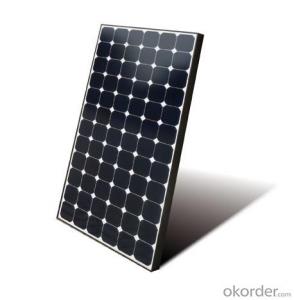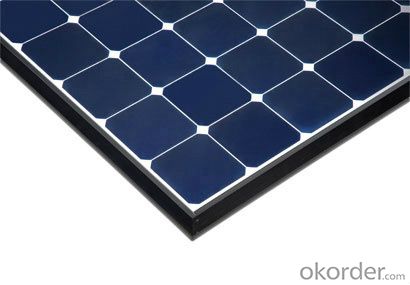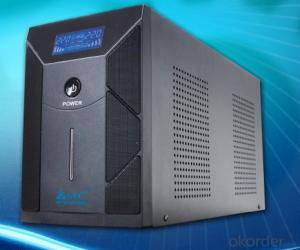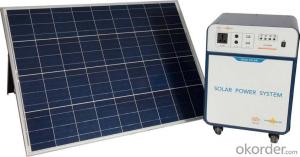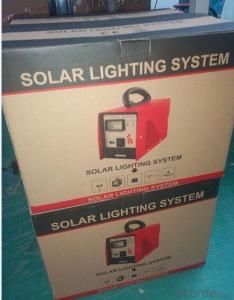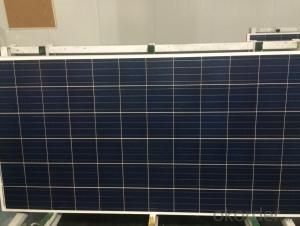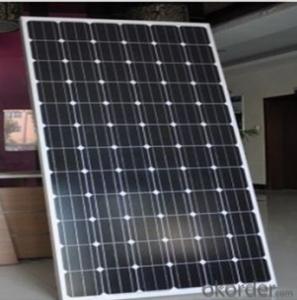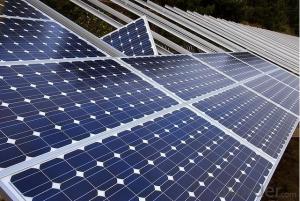Ets Solar Energy Systems 60w Solar Home Solution Approved by TUV UL CE
- Loading Port:
- Shanghai
- Payment Terms:
- TT OR LC
- Min Order Qty:
- 1 pc
- Supply Capability:
- 100 pc/month
OKorder Service Pledge
OKorder Financial Service
You Might Also Like
Specification
60W Solar Home Solution Approved by TUV UL CE
Production description
PV array:
Convert sunlight instantly into DC electric power. Formed by the solar modules (also called photovoltaic
modules) in accordance with the system requirements for series and parallel.
Solar charge controller:
A charge controller may be used to power DC equipment with solar panels. The charge controller
provides a regulated DC output and stores excess energy in a battery as well as monitoring the battery
voltage to prevent over charge or over discharge. An inverter can be connected to the output of a charge
controller to drive AC loads.
Inverter:
Converts DC output power of photovaltaic soalr panels into standard AC power for use in the local off-grid
electrical network. It is a critical component in a photovoltaic system, allowing the use of ordinary
commercial appliances.
Battery banks:
Stores energy when there is an excess coming in and distribute it back out when there is a demand. Solar
PV panels continue to re-charge batteries each day to maintain battery charge.

Physical characteristic
1. Rigorous quality control meets the highest international standards.
2. High-transmissivity low-iron tempered glass, strong aluminium frame.
3. Using UV-resistant silicon.
4. IS09001/14001/CE/TUV/UL
- Q: Can solar energy systems be used in areas with limited access to solar energy demonstration projects?
- Yes, solar energy systems can still be used in areas with limited access to solar energy demonstration projects. While demonstration projects are valuable for showcasing the benefits and feasibility of solar energy, they are not a requirement for utilizing solar energy systems. With proper planning and assessment, solar energy systems can be installed and used effectively in areas with limited access to demonstration projects, helping to harness clean and renewable energy sources.
- Q: How does the efficiency of solar panels vary across different roof types?
- The efficiency of solar panels can vary across different roof types due to factors such as the angle and orientation of the roof, shading from surrounding trees or buildings, and the presence of any obstructions or obstacles. A roof with a steep angle and south-facing orientation tends to be more efficient for solar panels as it receives maximum sunlight throughout the day. Additionally, a roof with minimal shading and obstruction allows for better sunlight exposure, resulting in higher efficiency. However, roofs with flat angles, north-facing orientation, or significant shading may experience decreased efficiency as they receive less direct sunlight. Ultimately, the efficiency of solar panels on different roof types depends on these factors and can vary accordingly.
- Q: How does the efficiency of solar panels vary across different panel technologies?
- The efficiency of solar panels can vary significantly across different panel technologies. Traditional silicon-based panels, also known as monocrystalline or polycrystalline panels, have an average efficiency range of 15% to 20%. However, newer technologies like thin-film solar panels, such as amorphous silicon or cadmium telluride, have lower efficiencies ranging from 10% to 12%. On the other hand, emerging technologies like perovskite solar cells have shown great promise with efficiencies exceeding 25%. Therefore, it can be concluded that the efficiency of solar panels varies based on the specific technology employed.
- Q: Can solar energy systems be used for waste management?
- Yes, solar energy systems can be used for waste management. Solar energy can power various waste management processes such as waste-to-energy conversion, landfill gas extraction, and waste water treatment. By utilizing solar power, these systems can reduce reliance on traditional energy sources, lower carbon emissions, and contribute to a more sustainable waste management approach.
- Q: How do solar energy systems affect the installation of satellite dishes?
- Solar energy systems can potentially affect the installation of satellite dishes by obstructing or shading the line of sight between the dish and the satellite. This can result in reduced signal strength or complete loss of signal reception. Proper alignment and placement of both the solar panels and the satellite dish are crucial to ensure minimal interference and optimal performance of both systems.
- Q: How much sunlight do solar panels need to generate electricity?
- Solar panels need direct sunlight for optimal electricity generation. However, they can still generate electricity even with indirect or diffused sunlight. The amount of sunlight required varies depending on factors such as panel efficiency, location, and weather conditions. Generally, a minimum of 4-5 hours of direct sunlight per day is recommended for efficient energy production.
- Q: Can solar panels be installed on different surfaces like glass or metal?
- Yes, solar panels can be installed on different surfaces like glass or metal. In fact, solar panels are commonly installed on glass surfaces, such as windows or skylights, to maximize sunlight exposure. Additionally, solar panels can also be mounted on metal roofs or other metal structures. The key requirement is ensuring a sturdy and secure installation to support the weight of the panels and maximize their efficiency.
- Q: Can a solar energy system be installed on a hotel or resort?
- Certainly, hotels and resorts have the ability to install a solar energy system. In fact, establishments all over the world have already adopted solar energy and have incorporated solar panels on their roofs or in the nearby areas. Solar energy systems offer various benefits to hotels and resorts, including cost savings, decreased environmental impact, and improved sustainability practices. By harnessing the power of the sun, hotels and resorts can generate clean and renewable electricity to fulfill a significant portion of their energy requirements. This can result in substantial savings on electricity bills, particularly in regions with abundant solar energy potential. Furthermore, solar energy systems can help reduce dependence on traditional energy sources like fossil fuels, thus mitigating the risks associated with fluctuating energy costs. The installation of solar panels on hotel and resort roofs or in open spaces is also an effective way to promote environmental sustainability. Solar energy is a clean and renewable power source that produces no greenhouse gas emissions or air pollutants during operation. By transitioning to solar energy, hotels and resorts can significantly decrease their carbon footprint and contribute to global efforts in combating climate change and promoting a greener future. Moreover, embracing solar energy can boost reputation and attract environmentally conscious guests. Many travelers actively seek out eco-friendly accommodations that prioritize sustainability practices. By installing a solar energy system, hotels and resorts can demonstrate their commitment to environmental stewardship and appeal to a growing market of eco-conscious tourists. In conclusion, hotels and resorts can undoubtedly install solar energy systems, which offer several advantages including cost savings, reduced environmental impact, and increased appeal to eco-conscious travelers. As the world continues to prioritize renewable energy sources, hotels and resorts can play a crucial role in the transition to a sustainable future by embracing solar energy.
- Q: Can solar energy systems be used in areas with high pollution?
- Yes, solar energy systems can still be used in areas with high pollution. While pollution may reduce the efficiency of solar panels to some extent, they can still generate electricity even in polluted environments. Furthermore, using solar energy can help reduce the dependency on fossil fuels and contribute to reducing pollution over time.
- Q: Can a solar energy system be installed on a barn or agricultural building?
- Yes, a solar energy system can be installed on a barn or agricultural building. In fact, barns and agricultural buildings are often suitable locations for solar panel installations due to their large and unobstructed roof space. Installing a solar energy system on a barn or agricultural building can help farmers and agricultural businesses reduce their energy costs, generate clean and sustainable electricity, and potentially even earn additional income by selling excess energy back to the grid.
Send your message to us
Ets Solar Energy Systems 60w Solar Home Solution Approved by TUV UL CE
- Loading Port:
- Shanghai
- Payment Terms:
- TT OR LC
- Min Order Qty:
- 1 pc
- Supply Capability:
- 100 pc/month
OKorder Service Pledge
OKorder Financial Service
Similar products
Hot products
Hot Searches
Related keywords
